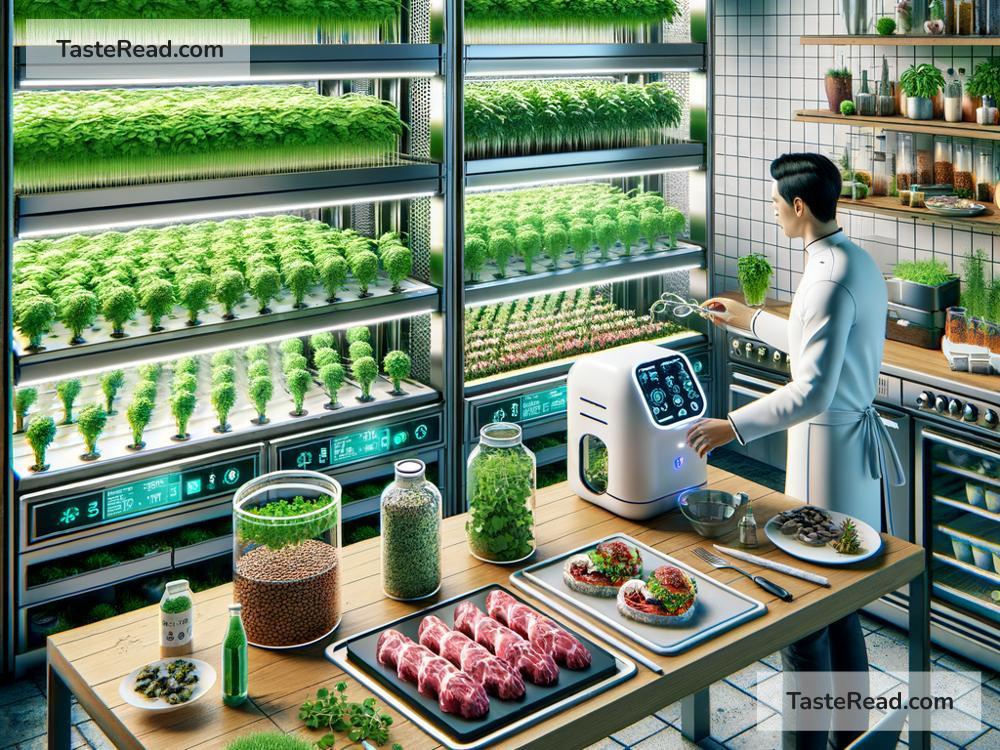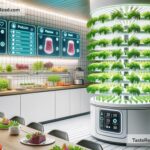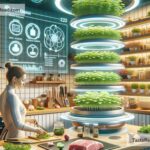The Future of Food: Transforming How We Feed the World
Food is one of our most basic needs, but the way we grow, produce, and consume food today is facing big challenges. Climate change, growing populations, and limited natural resources make it hard to continue feeding the world in the same way we’ve done for decades. If we want a healthy, sustainable future, we need transformative solutions that completely rethink how we produce, distribute, and enjoy food. In this article, we’ll explore some forward-thinking ideas that could change the way we eat and ensure everyone has access to nutritious meals.
Why the Food System Needs to Change
The global food system has many problems. For starters, it’s not sustainable. Agriculture—especially large-scale farming—uses enormous amounts of water, energy, and land. This damages the environment, contributing to deforestation, soil erosion, and greenhouse gas emissions. Livestock farming alone accounts for nearly 15% of global emissions due to methane produced by cows and other animals.
At the same time, food insecurity and hunger are major issues. Over 800 million people worldwide don’t have enough to eat. Ironically, a third of all food produced globally is wasted. This disconnect highlights the inefficiency of the current food system.
The situation is even more complex when you look at health. Many people struggle to eat balanced diets. In some countries, obesity is rising because of cheap, processed foods that are high in calories but lacking nutrients. At the same time, others deal with malnutrition because they don’t have access to fruits, vegetables, or protein. Simply put, we need smart solutions that can create a fair, resilient, and eco-friendly food future for everyone.
The Future of Food: Transformative Solutions
While the problems are big, there’s also hope. Innovative ideas and technologies are emerging to reshape the way the world produces and consumes food. Here are some of the most exciting solutions:
1. Alternative Proteins: Revolutionizing Meat
Meat production has a heavy impact on the environment. Raising animals for food requires massive amounts of land and water, and it releases harmful emissions. To address this, scientists and entrepreneurs are working on plant-based and lab-grown meat.
Plant-based meat substitutes, like beans, peas, and even processed products made to taste like real meat, are already popular in grocery stores and restaurants. Lab-grown meat, created by growing animal cells in a controlled environment, is gaining traction as well. These alternatives could provide the same protein as traditional meat—with far less environmental impact.
2. Vertical Farming: Growing Food Upwards
Instead of growing food in large fields that take up space and require lots of resources, vertical farming uses tall, indoor structures where crops are stacked in layers. Advanced lighting and climate control systems help plants grow year-round.
Vertical farming uses less water, no pesticides, and requires less land. It can even be done anywhere—like cities—bringing fresh food closer to urban populations. It’s a promising solution for reducing the strain on farmland while feeding more people.
3. Precision Agriculture: Farming Smarter
Technology can make farming more efficient and less wasteful. Precision agriculture uses tools like sensors, satellites, and AI to monitor crops and soil conditions. Farmers can use this data to know exactly how much water, fertilizer, and other resources their plants need—saving resources and reducing waste.
This approach helps farmers produce better yields while protecting the environment. It’s especially useful for regions impacted by climate change, where unpredictable weather threatens crops.
4. Reducing Food Waste
Every year, millions of tons of food are thrown away. This waste happens at farms, in stores, in restaurants, and in homes. Companies and governments are working on solutions to address this, like improving food storage technology, creating apps to redistribute leftovers, and changing regulations that force supermarkets to throw away “imperfect” but edible produce.
As individuals, we can do our part by planning meals carefully, storing food properly, and composting instead of discarding scraps.
5. Embracing Local and Regenerative Agriculture
Global food systems rely heavily on transporting goods across countries and continents. This requires a lot of fuel and creates emissions. Supporting local farms can reduce this reliance while strengthening communities.
Regenerative agriculture takes it a step further. Instead of just using land, this method actively restores soil health, improves biodiversity, and captures carbon from the atmosphere. It’s a win-win for farmers and the Earth.
The Role of People and Policy
While these tools and technologies offer exciting possibilities, true change will require action by everyone—from governments to businesses to everyday people. Strong policies are needed to invest in sustainable farming, provide incentives for eco-friendly practices, and make healthy food accessible for all. Businesses can continue innovating, making alternatives like lab-grown meat affordable and tasty. And individuals can make better choices, like eating less meat, buying local produce, and reducing waste.
Food for the Future
The future of food is full of possibilities. With smarter farming techniques, new technology, and a commitment to sustainability, we can solve many of the problems facing today’s food system. But we have to act together—governments, businesses, and individuals alike—to create a world where everyone has access to nutritious, affordable food without harming the planet.
The choices we make now will shape the meals, diets, and farming traditions of the future. When we work together, we’re not just feeding ourselves. We’re feeding our future.


